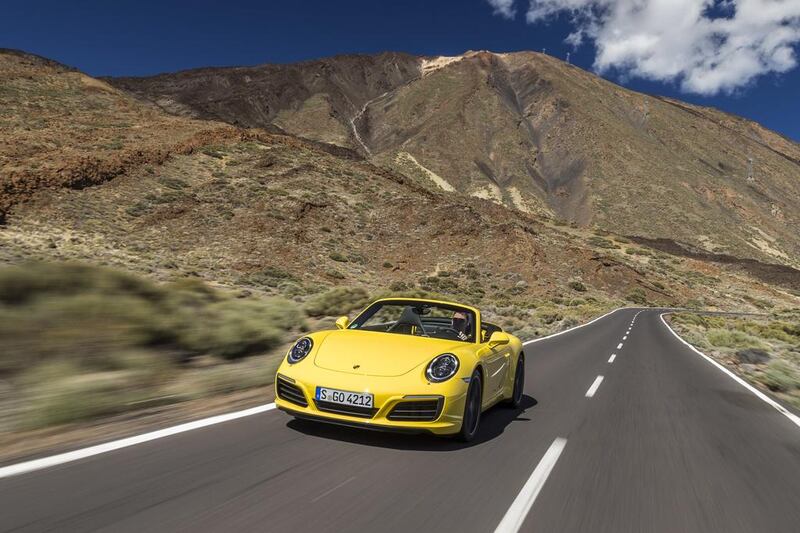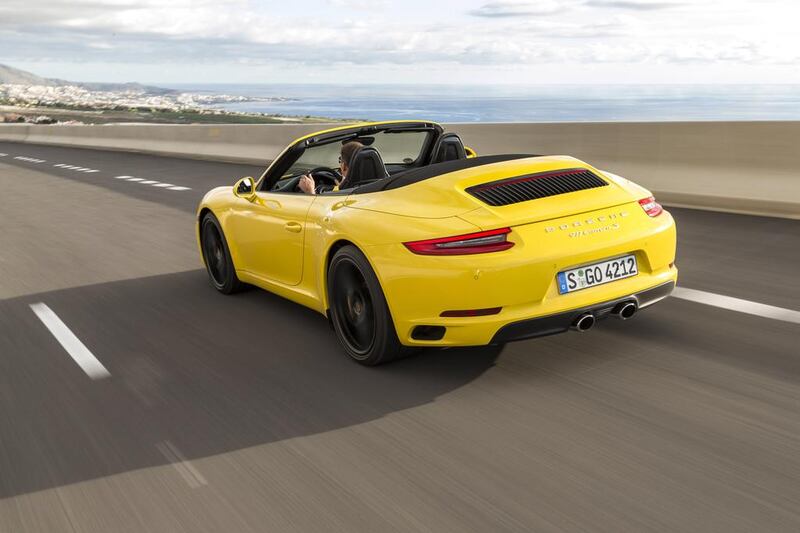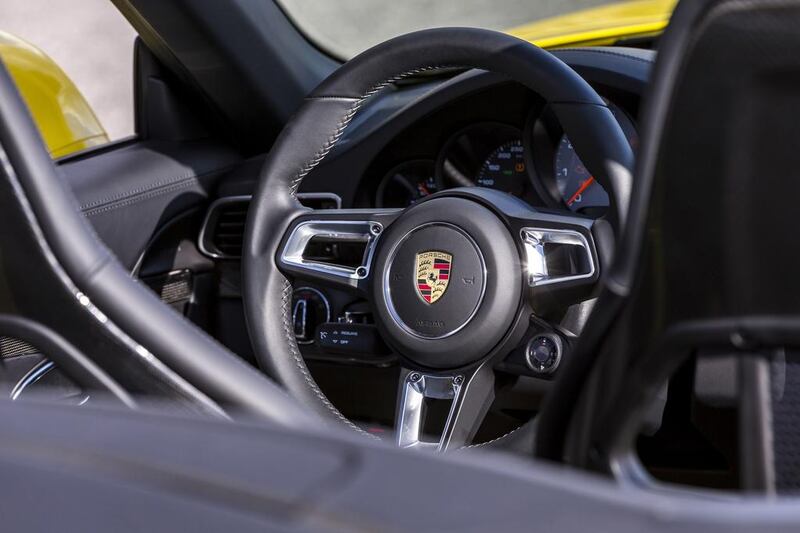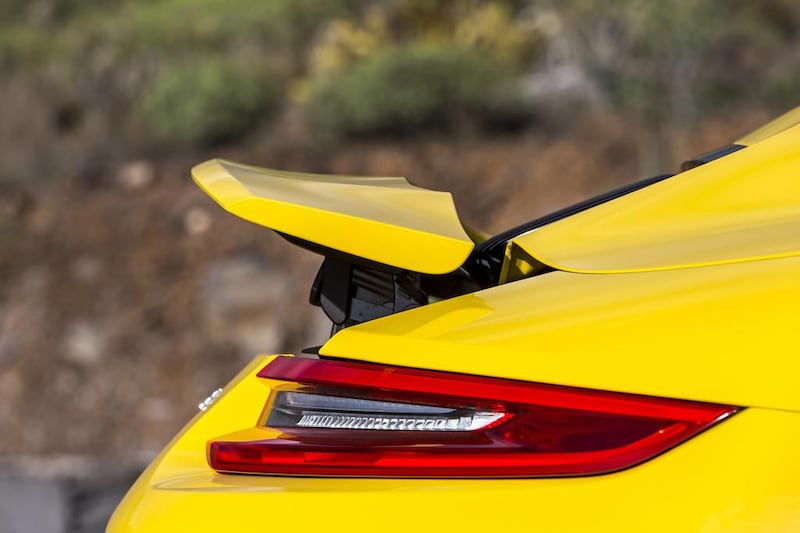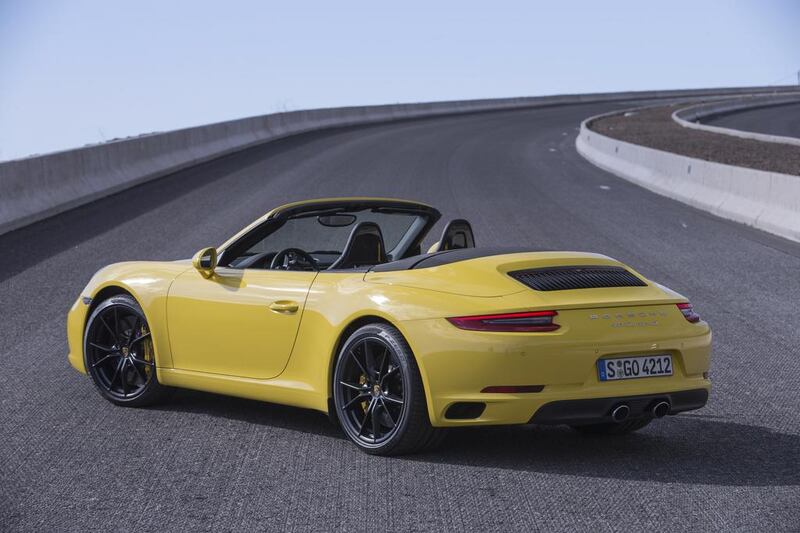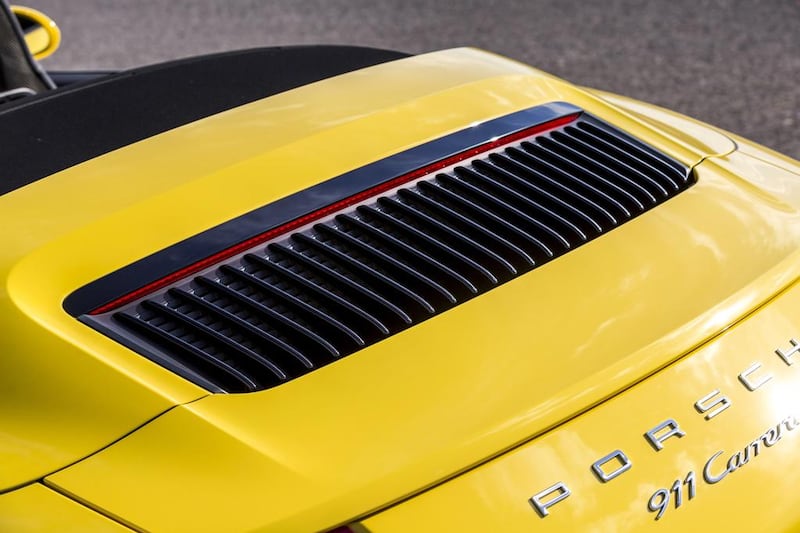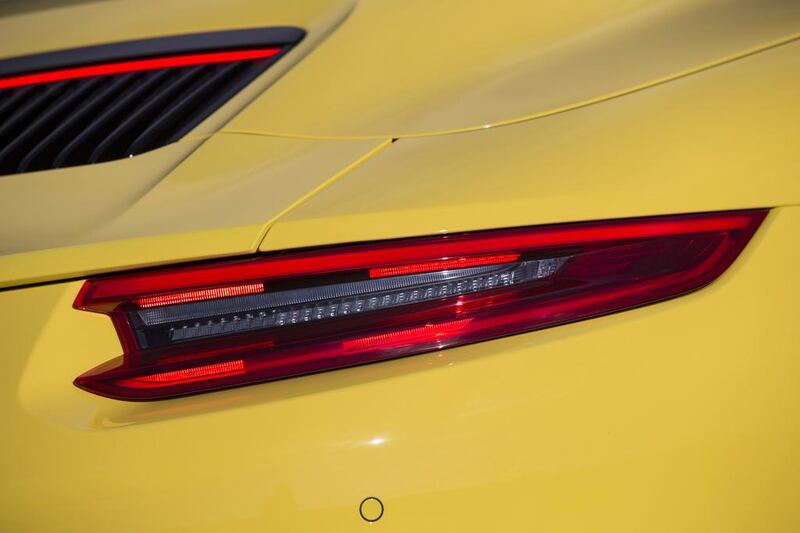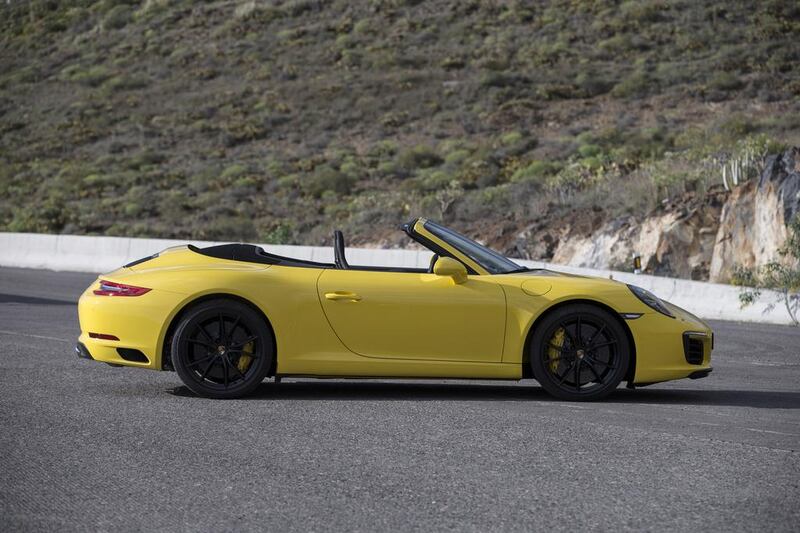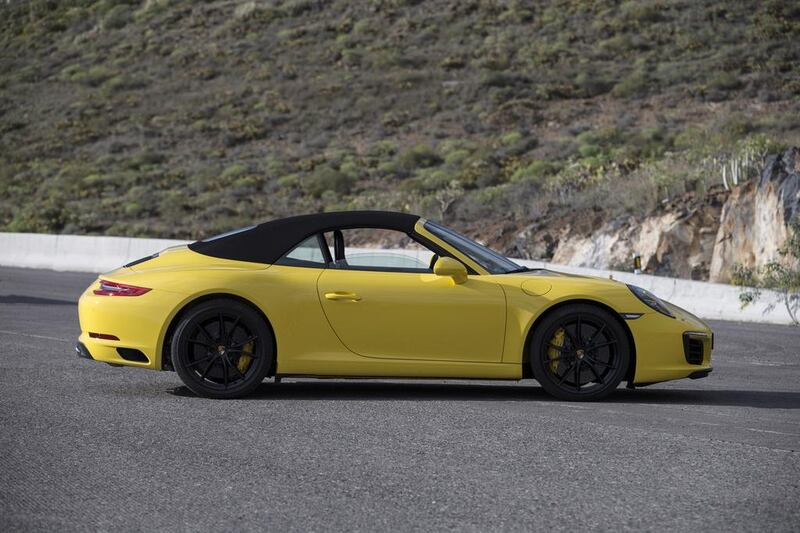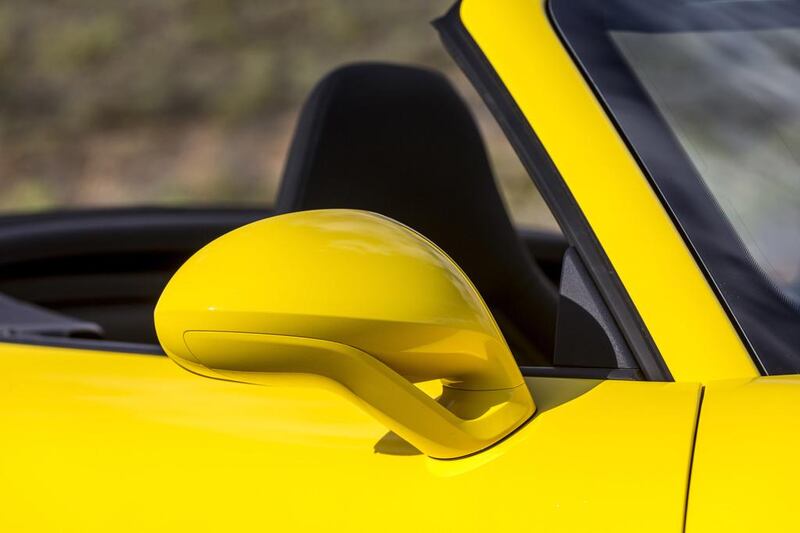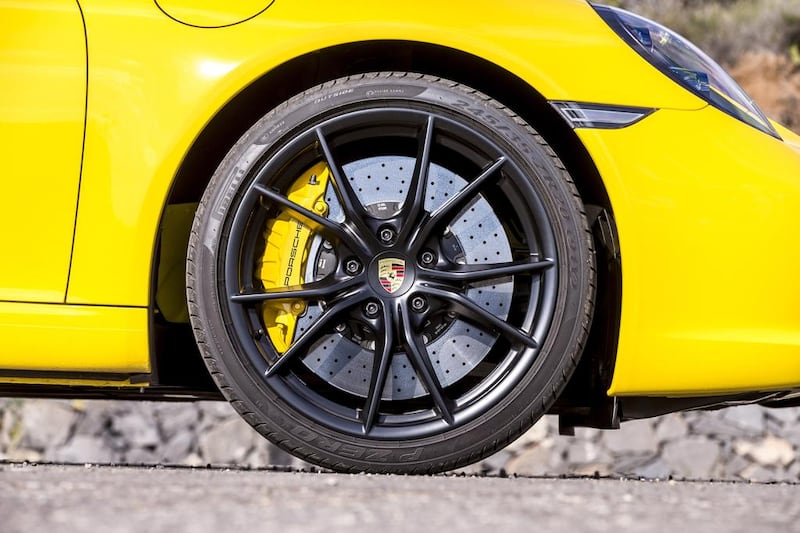After more than 50 years developing its 911, Porsche has surprised everyone by announcing a radical visual overhaul for the 2016 model.
No, not really. Such a move would be the single biggest gamble in sports-car history, because evolution has worked pretty well for the 911 so far. The powers-that-be at Porsche would be brave to overly tinker with the formula that’s made it the most-loved sports car in the world. So, a few headlight tweaks for 2016, a revised bumper, chuck a couple of new gadgets inside and feed it to the showrooms. Right?
Well, sort of. Take a look at the new, facelifted 991-generation 911. Visual changes are minimal, and that iconic silhouette is present and correct. But under the rear hatch, a big change has taken place, because no longer does the 911 Turbo have the monopoly on forced induction.
With pressure mounting on carmakers to drive up fuel economy, Porsche’s engineers decided they can no longer rely on naturally aspirated engines to give the desired power and efficiency. Consequently, the latest Carrera and Carrera S models, formerly powered by 3.4L and 3.8L engines, now boast a smaller 3.0L flat six, boosted by two turbochargers at either side of the bottom of the block. The last time Porsche tweaked the 911 this much was in 1998, when it moved from air-cooled to water-cooled engines.
So should the diehard fans be concerned about this latest bombshell? Will turbocharging fundamentally change the character of the entry-level 911s?
The Spanish holiday island of Tenerife is where these questions are answered, because it’s here that the 2016 911 is being launched for the world’s press. Away from the motorway that feeds tourists to their resort swimming pools is a network of twisting roads that climb the Teide volcano, a mountain that dominates the local map.
Our journey starts near the top of Spain's tallest peak, from a restaurant surrounded by landscape that wouldn't look out of place on the set of a 1960s Star Trek episode. The ground is largely pumice, with jagged rocks soaring from the Earth, pointing towards the looming peak. But there's no time for sightseeing. I'm handed the keys to a Carrera S Cabriolet for the drive down towards the island's capital, Santa Cruz.
At first glance, it’s a 911. And at second glance, too. Only under close inspection do the aesthetic upgrades reveal themselves. The front and rear bumpers have had the standard midlife revisions, with clever vents that open and close automatically. The engine cover also has some extra vents to cool the motor, which in Carrera S form has 414hp, up from 395hp in the original 991. The standard Carrera boasts 365hp, up from 345hp. The bodywork is fractionally more aerodynamic, the rear lights have some cool three-dimensional cut-outs, much like the Macan SUV, and the LED headlights have a similar four-dot pattern. The ride height has been lowered by 10 millimetres for a more hunkered-down look, but basically it’s business as usual.
The interior is familiar Porsche territory, but a search for the various “Make Things Louder And Faster” buttons on the transmission tunnel is now fruitless, as they’ve been moved to the steering wheel; just under the right spoke is a dial that lets you switch between Normal, Sport and Sport+, as well as a setting for your personal favourite arrangements. Want full-bore craziness from the engine, but with soft suspension? That’s where you programme it in, the new layout lifted straight from the 918 Spyder hypercar.
The new engine fires up via the classic key-fob twist to the left of the steering wheel – a tradition from the Le Mans 24 Hours race that lets drivers start the car and put it in gear at the same time. The sound, initially at least, is classic flat-six Porsche, but as I begin to open the 911 up, the whistling of the turbos increases in volume along with the revs. It probably helps that I have the roof down, and the slightly chilly mountain air blusters around the cabin. The turbo sound makes an interesting addition to a familiar tone; lift off the gas, and a chirp from the compressors flutters rather satisfyingly to the ears.
But never mind the sound. The key worry about installing turbos is whether the throttle response will be affected. The answer is slightly, but not to any great detriment. There’s a hint of lag between pedal mash and incoming g-forces, particularly outside of Sport and Sport+ modes, but it’s so minimal that it really makes little difference to the driving experience, at least on the road.
The increase in torque from the new engine is noticeable, however, as the road snakes down from near the 3,718-metre summit towards sea level. It means that on these sweeping roads down the side of the volcano, there’s less need to jump from cog to cog, effortless and quick though the seven-speed PDK transmission is at doing so. Rather, you can now leave it in a higher gear and rely on that swell of twist to dig the fat rear Pirellis into the asphalt, as the pistons dictate a crescendo towards 7,500rpm. That redline might be a few hundred rpm down on the outgoing car, but it’s still a mighty chorus, even if the volume is slightly less fortissimo than I remember from the original 991. It’s a great-sounding machine, and the power band is wider than ever.
The net result is that the new 911 is rapid, with a 0 to 100kph time of 4.1 seconds, with all the electronic go-faster bells and whistles turned on. The coupé will hit the same speed in just 3.7 seconds. But its pace isn’t just a result of the new engine having more power. There’s outrageous grip through bends, far more than can be exploited on public roads, which allows for superfast progress and pinpoint accuracy through the steering wheel.
When the 991 first launched in 2011, there were concerns about the move from hydraulic to electric power steering, and it was less tactile than the system it replaced. For the facelift, Porsche has worked hard at improving things, and it’s noticeably better, with much more information sent to the fingertips about what the front wheels are doing.
What’s curious about the 911’s character is that it rewards seemingly all the time. It’s a measure of the 911’s usability that, as well as being phenomenally dynamic, it’s also perfectly well-behaved on the motorway and around town. The urban sprawl of Santa Cruz takes over from the mountain nature, and with all the settings toned down, the 911 is a perfectly acceptable everyday machine – comfortable, easy to drive and far from the snorting, spine-jangling headache that so many sports cars become when not being pushed hard.
Are there any flies in the ointment with this second-generation 991? Well, the new Apple infotainment system seems to have a mind all its own, and considering the general ease of use of Apple products, is remarkably unintuitive to navigate. It’s early days for this system, so hopefully it will improve with future generations – it proves a constant headache when trying to operate the satnav system and plumb in a phone for music on the motorway. But that’s about it.
There’s no denying that the 911 is a triumph of engineering persistence and evolution that embraces its rear-engine configuration. A passenger ride from a professional Porsche driver on a closed section of mountain road proves that, in the right hands, the extra rear-axle traction offered by putting the power-plant so far back can make for a formidable weapon of speed. The latest tweaks to the 991 do nothing to compromise that potential – the extra power, improved torque and better steering feel makes up for the fractionally less-responsive throttle, but even if it didn’t, we’d be talking about tiny variances of excellence. The 911 remains a tremendous car to drive, wherever you take it.
motoring@thenational.ae
Follow us @LifeNationalUAE
Follow us on Facebook for discussions, entertainment, reviews, wellness and news.
